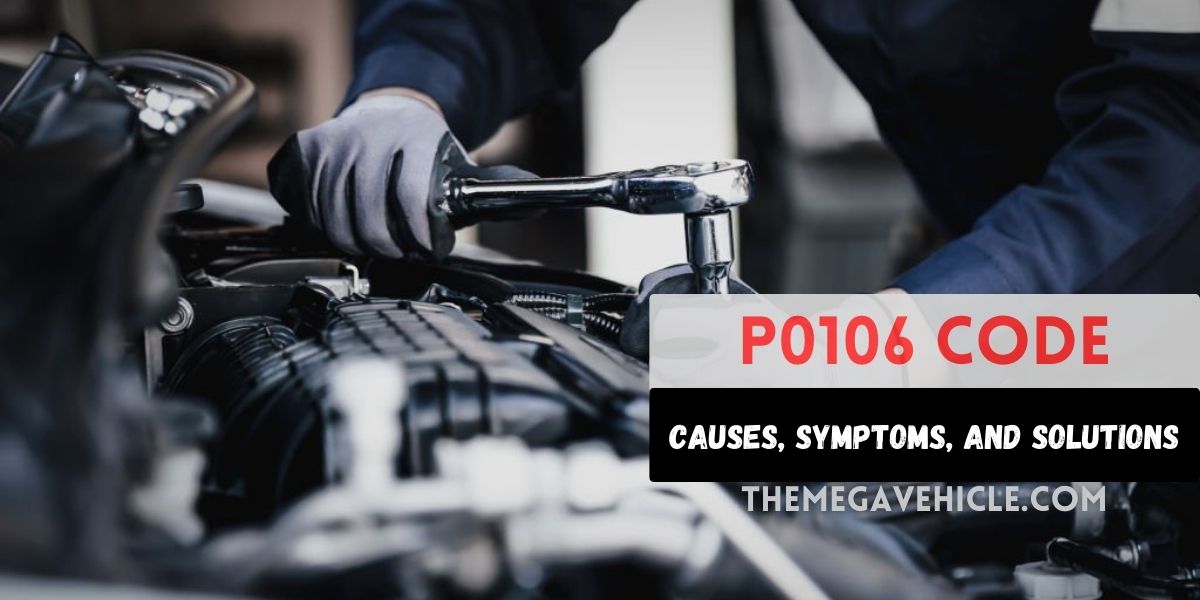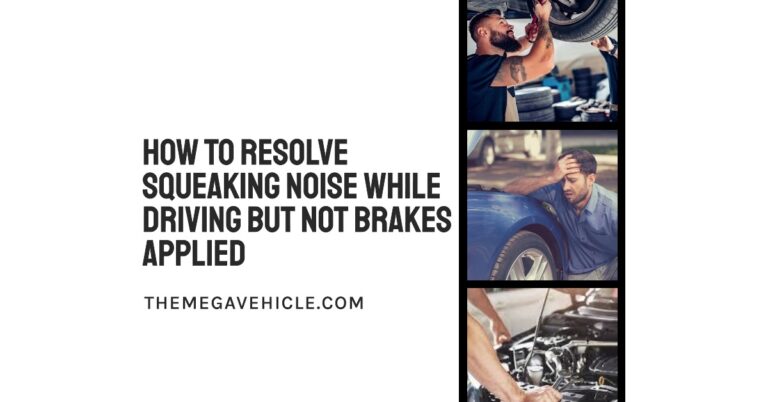P0106 Code: Causes, Symptoms, and Solutions

Modern vehicles are equipped with advanced diagnostic systems, and one common feature is the On-Board Diagnostics II (OBD-II) system. This system helps monitor the performance of various components and triggers trouble codes when issues are detected. In this article, we’ll delve into OBD-II trouble code P0106, exploring its definition, causes, symptoms, and potential solutions.
I. What is the P0106 Code?
The P0106 code, often referred to as the “Manifold Absolute Pressure (MAP) Sensor Range/Performance Problem,” is a diagnostic trouble code (DTC) thrown by your vehicle’s onboard computer system. It essentially signals that something has gone wrong with the MAP sensor, a critical component responsible for measuring the air pressure inside your engine’s intake manifold.
Think of the intake manifold as the engine’s lungs. Just as your lungs need the right amount of air for optimal breathing, your engine needs the correct air pressure in its intake manifold for efficient combustion. The MAP sensor acts as the air “gauge,” constantly monitoring this pressure and sending vital information to the engine computer (ECU). This data is then used by the ECU to calculate the precise amount of fuel needed for a clean, efficient burn.
So, when the P0106 code pops up, it means the ECU has detected an abnormality in the MAP sensor’s readings. This could be anything from a faulty sensor itself to issues with the wiring harness, vacuum leaks in the intake system, or even barometric pressure sensor problems in certain vehicles. Regardless of the cause, a malfunctioning MAP sensor can disrupt the delicate air-fuel balance, leading to a range of performance problems and potentially impacting your wallet at the gas pump.
In essence, the P0106 code is a warning sign that your engine’s air intake system needs attention. By understanding what it means and the potential consequences of ignoring it, you can take proactive steps to diagnose and address the issue before it causes further damage or becomes a costly repair.
II. Symptoms of a P0106 Code
While the P0106 code itself throws light on a potential issue with your MAP sensor, it’s the accompanying symptoms that truly scream for attention. Keep an eye out for these telltale signs that your engine might be struggling with an inaccurate air-fuel mixture:
- Rough Idling and Engine Hesitation: Remember the MAP sensor’s role as the air pressure “gauge”? When it malfunctions, the engine computer receives confusing data about the air available, leading to an incorrect fuel mixture. This translates to an inconsistent burn, causing your engine to stumble and stutter at idle, and hesitate when you press the gas pedal.
- Poor Fuel Economy: With the air-fuel ratio thrown off balance, your engine has to work harder to compensate. This translates to burning more fuel for the same power output, resulting in a noticeable drop in your fuel efficiency. You might find yourself filling up more often than usual, even if your driving habits haven’t changed.
- Black Exhaust Emissions: A faulty MAP sensor often leads to an overly rich fuel mixture, meaning more fuel than necessary is being injected into the cylinders. This excess fuel doesn’t burn completely, resulting in black smoke pouring out of your tailpipe. Not only is this bad for the environment, but it’s also a clear indication that your engine’s combustion process is inefficient.
- Illuminated Check Engine Light: This is the most universal warning sign of a problem in your vehicle’s emission control system. While a lit “Check Engine Light” can signify various issues, the P0106 code specifically points towards a potential MAP sensor malfunction. Don’t ignore this warning!
These are just some of the common symptoms you might experience with a P0106 code. Remember, a faulty MAP sensor isn’t something to take lightly. Ignoring these signs can lead to further engine damage, increased emissions, and a heavier wallet at the repair shop. So, act promptly and address the issue as soon as you notice these red flags.
Recommendations:
- Prompt Diagnosis: As soon as you notice the P0106 code, it’s crucial to have your vehicle diagnosed by a qualified mechanic to pinpoint the exact cause. This will ensure the correct repairs are made to restore proper engine function.
- Avoid Delaying Repairs: Don’t put off addressing the P0106 code, as it can lead to more serious problems and potentially higher repair costs down the line.
- Seek Professional Help: If you’re unsure about troubleshooting or repairs, consult a mechanic to ensure the issue is addressed correctly and safely.
Also Read: P0340 Code: Symptoms, Causes, And Repair Guide For Your Car
III. Causes of a P0106 Code: The Mystery Behind the Faulty Readings
Several factors can trigger OBD-II code P0106, including problems with the MAP sensor, vacuum leaks, or issues with the wiring or connectors associated with the sensor. Identifying the exact cause is crucial for effective troubleshooting. Here are several potential culprits that could be triggering this code:
- Faulty MAP Sensor: Sometimes, the sensor itself might be the main culprit. Due to wear and tear, internal damage, or contamination, it can start producing inaccurate readings, leading to the code.
- Dirty or Clogged Air Filter: A restricted air filter can create a pressure drop in the intake manifold, confusing the MAP sensor. Regularly replacing your air filter is essential for preventing this issue.
- Vacuum Leaks in the Intake System: Any cracks, loose connections, or worn-out hoses in the intake system can allow unwanted air to enter, disrupting the pressure readings and triggering the code.
- Faulty Wiring or Connectors: Damaged wires, corroded connectors, or electrical interference can disrupt the signal path between the MAP sensor and the ECU, leading to inaccurate readings.
- Barometric Pressure Sensor Issues: In some vehicles, a faulty barometric pressure sensor (which measures atmospheric pressure) can also contribute to the P0106 code, as it can affect the MAP sensor’s calibration.
Identifying the root cause is essential for successful repairs. A thorough diagnosis involving visual inspections, electrical testing, and potentially smoke testing for vacuum leaks is often necessary to pinpoint the exact issue. Once the culprit is identified, appropriate repairs or replacements can be made to restore the MAP sensor’s accuracy and get your engine running smoothly again.
IV. Diagnosing a P0106 Code: Decoding the MAP Sensor Mystery
The P0106 code might be flashing on your dashboard, leaving you wondering what’s wrong with your engine. Fear not, fellow driver! Unraveling the mystery behind this code and diagnosing the culprit involves a series of steps, much like a detective piecing together clues. Here’s a detailed roadmap to help you navigate the process:
1. Initial Code Scan
Think of your OBD-II scanner as a high-tech magnifying glass for your engine’s internal workings. Plug it into your car’s diagnostic port, usually located under the steering wheel near the dashboard. This nifty tool will retrieve any stored trouble codes, highlighting the P0106 code and any other potential accomplices.
Once you have the code suspects lined up, clear them and take your car for a spin. If the P0106 reappears, it’s time to roll up your sleeves and delve deeper.
2. Visual Inspections
Pop the hood and transform yourself into a car detective, scrutinizing key components for clues. Start with the air filter, the lungs of your engine. Is it clogged with dust and debris, resembling a forgotten attic air vent? Replace it with a fresh one to ensure smooth air flow.
Next, examine the intake system, the air’s highway into your engine. Look for cracks, loose connections, or damaged hoses that could be acting like rogue detours, causing pressure imbalances. Don’t forget the MAP sensor itself, the star witness in this case. Check for physical damage, loose connections, or corrosion that might be disrupting its readings.
3. Electrical Testing
Now, it’s time to grab your multimeter, your trusty electrical sleuthing tool. Like a voltmeter checking a house’s wiring, measure the MAP sensor’s voltage and resistance. Compare these readings to the manufacturer’s specifications in your car’s manual. Any discrepancies could point to a faulty sensor or wiring issues.
Follow the wiring harness, the electrical path connecting the sensor to the ECU, the engine’s brain. Look for damage, corrosion, or loose connections that might be causing communication breakdowns.
4. Vacuum Leak Detection
Sometimes, the culprit lurks unseen. Vacuum leaks, like sneaky air thieves, can steal pressure from the intake system, confusing the MAP sensor. To smoke out these elusive foes, consider using a smoke testing machine. This nifty tool pumps harmless smoke into the intake system, revealing any leaks like wispy plumes, making them easy to pinpoint and seal.
5. Additional Troubleshooting
In some cases, the plot thickens, and further investigation might be needed. Depending on your vehicle, the barometric pressure sensor (which measures atmospheric pressure) could be involved, influencing the MAP sensor’s readings. Additionally, the throttle body and EGR valve, responsible for air and exhaust flow, might require inspection if other symptoms point towards them.
Remember, this is a general roadmap, and the specific diagnostic steps may vary depending on your car’s make and model. Consult your car’s repair manual or a qualified mechanic for detailed instructions and assistance. With a little detective work and the right tools, you’ll be able to decode the P0106 code mystery and get your engine humming smoothly again!
Also Read: P0441 Toyota Code: A Detailed Guide to Diagnosis and Repair
V. Fixing the P0106 Code: From Diagnosis to Driveability
Once you’ve identified the culprit behind the P0106 code, it’s time to roll up your sleeves and tackle the fix. The solution, like a well-written story, depends heavily on the plot twist revealed during diagnosis. Here are some potential resolutions:
1. Replacing the MAP Sensor
If the MAP sensor itself has malfunctioned, a replacement becomes the hero of the tale. Choose a high-quality sensor compatible with your specific vehicle and follow the installation instructions carefully. Remember, proper torque specifications are crucial for accurate readings. With a fresh sensor in place, the P0106 code might just vanish into the automotive lore.
2. Cleaning the Air Filter and Intake System
A dirty air filter, the neglected air intake highway, can be easily rectified. Simply replace it with a clean one to restore proper airflow and eliminate a potential source of pressure imbalance. If the intake system itself has accumulated grime, consider using a specialized intake cleaner to remove any build-up that might be confusing the MAP sensor.
3. Repairing Vacuum Leaks
Those sneaky vacuum leaks, acting like mischievous air pirates, need to be patched up. Identify the leak location through visual inspection or smoke testing, and then patch or replace the damaged hose or component. With the air thieves dealt with, the MAP sensor can finally receive accurate pressure readings.
4. Fixing Faulty Wiring or Connectors
Damaged wiring or corroded connectors can disrupt the communication between the MAP sensor and the ECU, the engine’s brain. Repairing or replacing the affected parts becomes the necessary step. If electrical repairs aren’t your forte, don’t hesitate to enlist the help of a qualified mechanic to ensure proper connections and restore the smooth flow of information.
5. Consulting a Mechanic
Not everyone is a DIY hero, and that’s perfectly okay! If the repairs seem complex or beyond your comfort zone, remember that skilled mechanics are the knights in shining armor of the automotive world. Seek their expertise for a professional diagnosis and repair, ensuring your engine gets the TLC it deserves.
Remember, the P0106 code is just a warning sign, not a guaranteed death sentence for your engine. By following these potential fixes, consulting a mechanic when needed, and maintaining good preventative maintenance habits, you can keep your engine running smoothly and banish those pesky trouble codes to the realm of automotive history.
VI. Additional Tips and Resources: Keeping the P0106 Code at Bay
Conquering the P0106 code is one thing, but preventing its unwelcome return is another. Here are some handy tips to keep your engine happy and the “Check Engine” light off:
1. Regular Maintenance is Key
Prevention is always better than cure, especially when it comes to your engine. Sticking to your vehicle’s recommended maintenance schedule is crucial. This includes timely oil changes, replacing the air filter according to the manufacturer’s specifications (often annually), and attending to any scheduled tune-ups. Regular maintenance ensures your engine runs efficiently, minimizing the risk of issues like clogged air filters or faulty sensors.
2. High-Quality Air Filters Matter
Think of your air filter as the first line of defense against dust and debris entering your engine. Investing in high-quality air filters and replacing them regularly will ensure good airflow and prevent the MAP sensor from being confused by restricted intake. Remember, a clean air filter is a happy engine!
3. Watch for Warning Signs
Don’t wait for the P0106 code to reappear before paying attention to your engine. Be mindful of symptoms like rough idling, poor fuel economy, or black exhaust emissions. These could be early signs of an air intake issue, and addressing them promptly can prevent more serious problems and the dreaded code from popping up again.
4. Consult the Experts
For complex repairs or if you’re unsure about troubleshooting, don’t hesitate to seek professional help. Qualified mechanics possess the expertise and tools to diagnose and fix the P0106 code and any underlying issues effectively. Consider them your automotive superheroes, ready to save the day (and your engine)!
Additional Resources:
- National Highway Traffic Safety Administration (NHTSA): https://www.nhtsa.gov/
- Society of Automotive Engineers (SAE): https://www.sae.org/
- AutoZone Repair Guides: https://www.autozone.com/diy/repair-guides
- CarMD: https://www.carmd.com/
These resources offer valuable information about specific vehicle models, diagnostic procedures, and repair advice. Remember, knowledge is power when it comes to understanding and tackling the P0106 code and keeping your engine running smoothly.
By following these tips and utilizing the provided resources, you can proactively prevent the P0106 code from becoming a recurring nightmare. Keep your engine happy, your wallet full, and your “Check Engine” light dim with proper maintenance, vigilance, and a little help from the automotive experts!
VII. How Much Does It Cost to Fix Code P0106?
| Factor | Cost Range | Description |
|---|---|---|
| Root Cause | ||
| MAP Sensor Replacement | $40 – $250 (part) | New sensor cost based on vehicle make and model. |
| Labor for MAP Sensor Replacement | $50 – $150 | Replacement labor cost varies by mechanic’s hourly rate. |
| Air Filter Replacement | $15 – $30 | Cost of new air filter, minimal labor involved. |
| Vacuum Leak Repair | $50 – $300 | Varies depending on leak location and complexity. |
| Wiring or Connector Repair | $50 – $200+ | Depends on the extent of damage and labor involved. |
| Labor Costs | ||
| Mechanic’s Hourly Rate | $50 – $150 | Varies by location and shop. |
| Diagnostic Time | Varies | May impact overall cost based on time needed to identify the issue. |
| Complexity of Repairs | Varies | Difficult repairs often require more labor, increasing cost. |
| Vehicle Type and Location | ||
| Vehicle Make and Model | Varies | Parts and labor costs can differ based on your car. |
| Geographical Location | Varies | Urban areas typically have higher mechanic rates. |
| Additional Costs | ||
| Diagnostic Fees | $50 – $150 | Some mechanics charge for initial diagnosis. |
| Taxes and Shop Supplies | Varies | Typically added to the final bill. |
| General Estimates | ||
| Simple Fixes (Air Filter, Minor Leaks) | $50 – $150 | Affordable fixes with minimal labor and parts cost. |
| MAP Sensor Replacement | $150 – $450 | Includes both parts and labor cost for replacing the sensor. |
| More Complex Repairs | $200 – $500+ | Extensive repairs like major vacuum leaks or wiring issues. |
Note: These are estimates and the actual cost to fix a P0106 code will vary depending on your specific circumstances. Consulting a qualified mechanic for a diagnosis and quote is always recommended.






